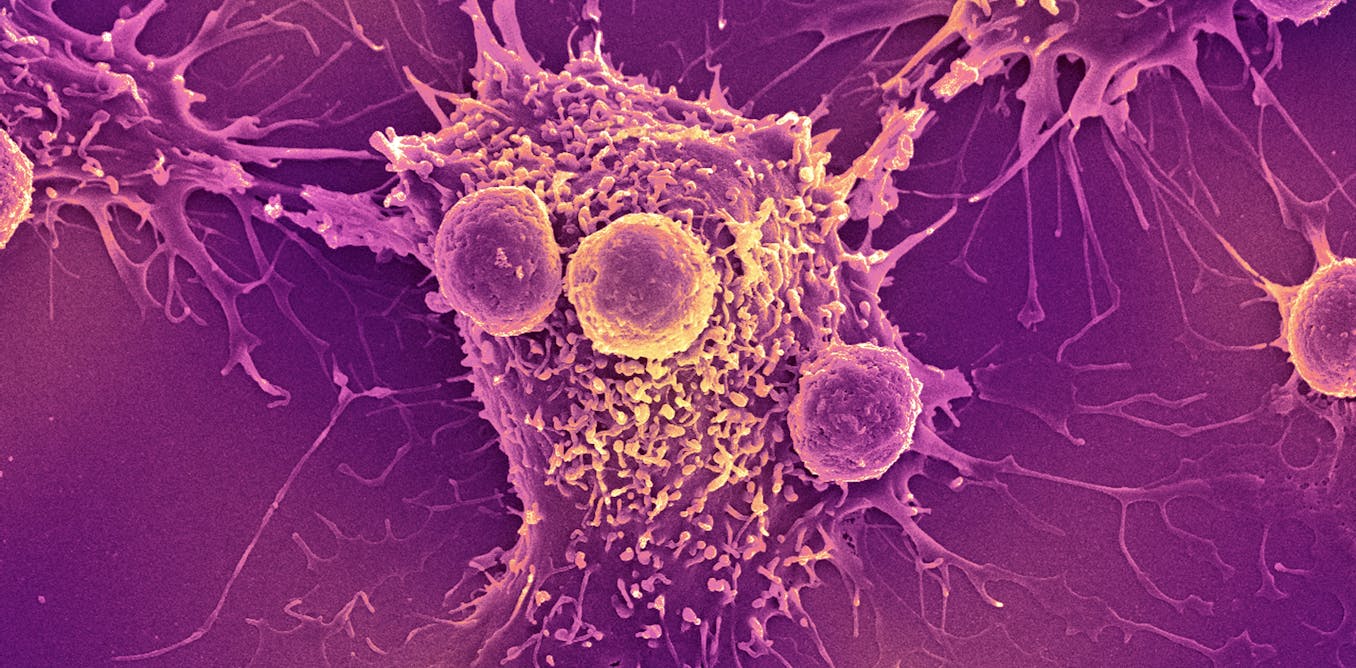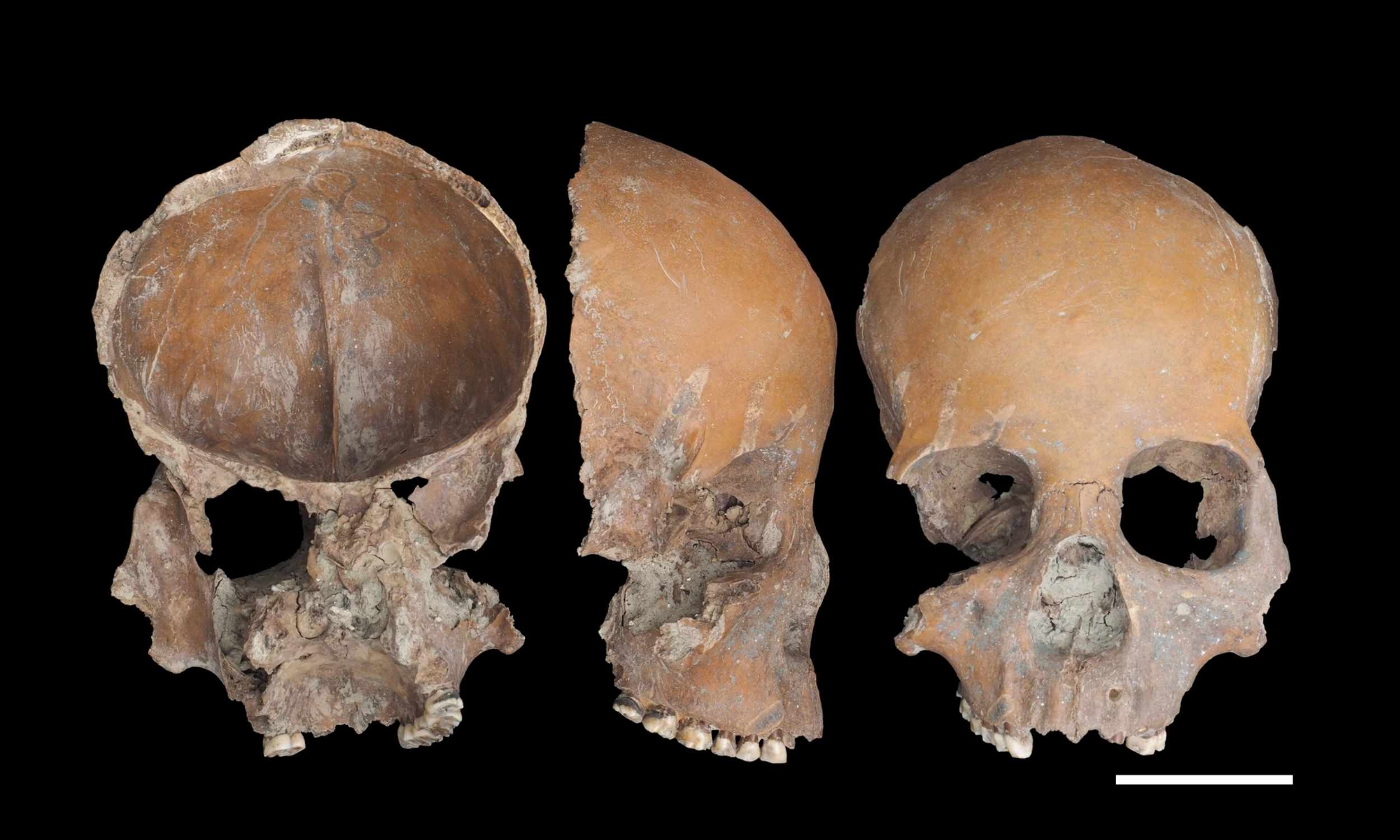Archaeologists say Neolithic Liangzhu residents shaped human skulls and other bones into everyday tools like bowls, cups, masks, and knives. The dig site dates back roughly 5,000 years and documents the first known example of routine human…
Blog
-

COVID-19 mRNA vaccines could unlock the next revolution in cancer treatment – new research
The COVID-19 mRNA-based vaccines that saved 2.5 million lives globally during the pandemic could help spark the immune system to fight cancer. This is the surprising takeaway of a new study that we and our colleagues published in the journal…
Continue Reading
-

Redefining the Edge AI Developer Experience on Arm with New ExecuTorch 1.0 GA Release
News highlights:
- Through a unified PyTorch workflow, developers can seamlessly deploy PyTorch models across billions of Arm-based edge devices, unlocking faster, more advanced on-device AI applications and experiences
- Developers’ workloads automatically benefit from performance and efficiency gains when targeting devices built on Arm CPUs, GPUs and NPUs through Arm KleidiAI, TOSA, and CMSIS-NN backend integrations in ExecuTorch
- Whether building for mobile, PC, wearables, edge sensors or high-performance IoT, developers can start benefiting from ExecuTorch 1.0 GA release now, with extensive resources from Arm and Meta available here
Imagine private, on‑device AI assistants and voice interfaces that run without needing cloud connectivity and respond with minimal latency, chatbots that suggest replies as you type, gaming experiences that adapt in real-time to every player, and smarter always-on, power efficient sensors in wearables and IoT devices that deliver powerful intelligence with low energy use.
These are the kinds of AI experiences that ExecuTorch – Meta’s on-device runtime for PyTorch – and Arm will help developers build, while delivering optimized performance and faster development through a unified PyTorch workflow that runs seamlessly across billions of Arm-based edge devices. The latest milestone for ExecuTorch is today’s General Availability (GA) release, which brings the vision of running AI everywhere into a practical, scalable reality for millions of developers.
What ExecuTorch 1.0 GA Enables: One Workflow, Billions of Edge Devices
The ExecuTorch 1.0 GA release transforms how developers bring their PyTorch models to life at scale. Instead of having model versions, pipelines, or frameworks tuned separately for different device types, developers can author, export, optimize, quantize and deploy the same PyTorch workflow end-to-end across mobile, embedded and edge, minimizing fragmentation and boosting time-to-market.
This gives developers one toolset to seamlessly deploy their apps and workloads, unlocking more advanced, faster AI experiences and features across a broad range of edge devices, from ultra-efficient microcontrollers to flagship smartphones, that run on Arm CPUs, GPUs and Ethos-U NPUs. A recent Meta blog post highlights some examples of on-device AI features powered by ExecuTorch that are already serving billions of people on Facebook, Instagram, Messenger, and WhatsApp, including improved video call quality, music recommendations and creative storytelling.
The Arm ExecuTorch Enablers
Together, Arm KleidiAI, CMSIS-NN and the Tensor Operator Set Architecture (TOSA) deliver a unified optimization framework through backend integrations in ExecuTorch, so developers’ apps and workloads targeting Arm-based edge devices automatically benefit from performance and efficiency gains with no need to modify their codes or models.
KleidiAI, which provides Arm kernel integrations to accelerate AI workloads across current and future Arm CPU platforms, is now integrated in multiple frameworks and runtimes, including the XNNPACK Runtime used by ExecuTorch. In parallel, the CMSIS-NN ExecuTorch backend integration serves as the equivalent enabler for Arm Cortex-M-based microcontrollers, providing support for highly efficient, directly integrated inference on constrained edge devices.
The TOSA integration in ExecuTorch provides a unified execution interface for edge AI and machine learning (ML) workloads running on Arm GPUs and Ethos-U NPUs. TOSA converts models into a standardized hardware-agnostic representation, enabling consistent deployment, portability, and verification across these technologies, and reducing engineering effort.
What The ExecuTorch 1.0 GA Release Brings to Mobile and Edge AI Markets
Mobile
For mobile, the ExecuTorch 1.0 GA release enables developers to deploy more intelligent on-device AI experiences faster and more efficiently across the billions of Arm-based smartphones in use today, as well as next-generation mobile devices.
Key benefits include:
- Faster time-to-market through seamless integration with Android app workflows and full support for PyTorch – from model development to deployment – on mobile.
- Built-in performance gains through KleidiAI optimizations, delivering faster startup times, lower latency, and reduced memory usage for a range of advanced on-device AI features and experiences, from text and audio generation to real-time voice and virtual assistants. For example, the Stable Audio Small text-to-audio model generates 11 seconds of audio in just 7 to 8 seconds entirely on-device running on Arm CPUs, with the generation time dropping to under four seconds on SME2-enabled consumer devices.
- Extensive Arm technology support, enabling AI models to run across all current and future Arm CPUs and GPUs, including:
- Current Arm Mali and Immortalis GPUs via the Vulkan path; and
Edge AI and High Performance IoT
The Arm Ethos-U processor family – which provides best-in-class acceleration across edge AI applications in IoT markets – is a key production backend extensively supported by the ExecuTorch 1.0 GA release.
This delivers:
- Accelerated time-to-market through ahead-of-time (AoT) compilation and runtime support, and availability of virtual platforms that mean developers can start building their apps and workloads before the availability of Ethos-U-based hardware. For example, through Arm Corstone subsystems developers can begin by emulating Ethos-U targets on the Fixed Virtual Platform (FVP), then move to FPGA prototypes, and finally to silicon implementations built on Corstone.
- An extensive portfolio for developers, with over 100 pre-validated AI models (many of which are listed here and here), including image classification and keyword spotting, ready for end-to-end deployment on Ethos-U NPUs using ExecuTorch.
- Enhanced portability via the TOSA standard, which means that models built for one Arm platform can be deployed across many.
- Streamlined model compilation through the integrated Arm Vela compiler, which optimizes and partitions AI workloads for Ethos-U NPUs to automatically boost efficiency and lower latency without additional manual work.
- Efficient AI inference, even on very constrained power budgets, via strong operator coverage, quantization tools, and fallback paths, like CMSIS-NN support for Cortex-M-based microcontrollers.
Moreover, in high performance IoT, the KleidiAI integrations with leading AI frameworks accelerates the performance and efficiency of key models, including Meta Llama 3 and Phi-3, on Arm CPUs.
Learn more about what the ExecuTorch 1.0 GA release means for developers targeting edge AI and high-performance IoT markets in this Arm Community technical blog.
Developers Can Access ExecuTorch 1.0 GA Benefits Now
Developers can start benefitting from the ExecuTorch 1.0 GA straight away. Head to developer.arm.com, explore all the learning paths for ExecuTorch, review the relevant documentation and tutorials, and then integrate the workflows into your model export, compilation, and deployment pipelines. Also more details about ExecuTorch can be found on the PyTorch landing page, alongside developer documentation for XNNPACK, Ethos-U, VGF and Vukan devices. Whether building for mobile, PC, wearables or edge sensors, the development path forward is unified and seamless.
Bringing Edge AI to Life Everywhere for Everyone
The ExecuTorch 1.0 GA release reaffirms Arm’s vision that AI runs consistently and seamlessly across every layer of our hardware ecosystem. Together with the strength of the Arm compute platform and our broad ecosystem, ExecuTorch 1.0 unlocks the scalability, performance, and innovation needed to bring the next generation of edge AI experiences to life everywhere, for everyone.
Arm at the 2025 PyTorch Conference
Visit the Arm talks at the PyTorch conference to learn more about how to deploy AI models and workloads at scale on Arm-based platforms. Visitors can also see ExecuTorch 1.0 in action at the Arm booth and learn more about how to access its full benefits across edge AI applications and workloads.
Any re-use permitted for informational and non-commercial or personal use only.
Media Contacts
Melissa Woodbridge
Senior PR Manager
melissa.woodbridge@arm.com
+44 7469 851193
Continue Reading
-

League Pass Game of the Day: Orlando Magic vs. Miami Heat (7 ET)
The Magic’s home opener tips off with a matchup against the Heat.
The Orlando Magic play host to the Miami Heat in a Southeast Division showdown to begin each team’s 2025-26 NBA season. From players making debuts for their new squads to…
Continue Reading
-

Nubia Z80 Ultra unveiled with Snapdragon 8 Elite Gen 5 and 7,200mAh battery
The Nubia Z80 Ultra is the latest flagship from the brand and it features several improvements over its predecessor, like the latest Snapdragon 8 Elite Gen 5 chipset, a revised camera setup and a larger 7,200mAh Si/C battery with 90W wired…
Continue Reading
-

Mexico City Grand Prix F1 Fan Guide 2025
Foodie fuel – what to eat and drink
Mexico City’s culinary scene is as bold as its race weekend. Every meal bursts with colour, spice, and heat, turning street food and fine dining alike into part of the Grand Prix experience.
Tacos al pastor…
Continue Reading
-

Below Deck Star Daisy Kelliher Launches Yacht Mess Podcast (Exclusive)
Below Deck Sailing Yacht star Daisy Kelliher is sailing the seas with her very own new podcast, The Hollywood Reporter can exclusively reveal.
The reality star is launching Yacht Mess alongside her friend and former Below Deck charter…
Continue Reading
-

Scientists create pigs resistant to classical swine fever | Gene editing
Pigs that are resistant to a deadly viral disease have been created by scientists at Edinburgh’s Roslin Institute.
The gene-edited animals remained healthy when exposed to classical swine fever (CSF), a highly contagious and often fatal disease….
Continue Reading
-

Fuoco joins a high-altitude challenge
The Formula 1 World Championship has left Texas for the Mexico City Grand Prix, in the capital city of the Central American country. The race takes place at an altitude of over 2000 metres at the Autódromo Hermanos Rodríguez,…
Continue Reading
-
Just a moment…
Just a moment… This request seems a bit unusual, so we need to confirm that you’re human. Please press and hold the button until it turns completely green. Thank you for your cooperation!
Continue Reading

